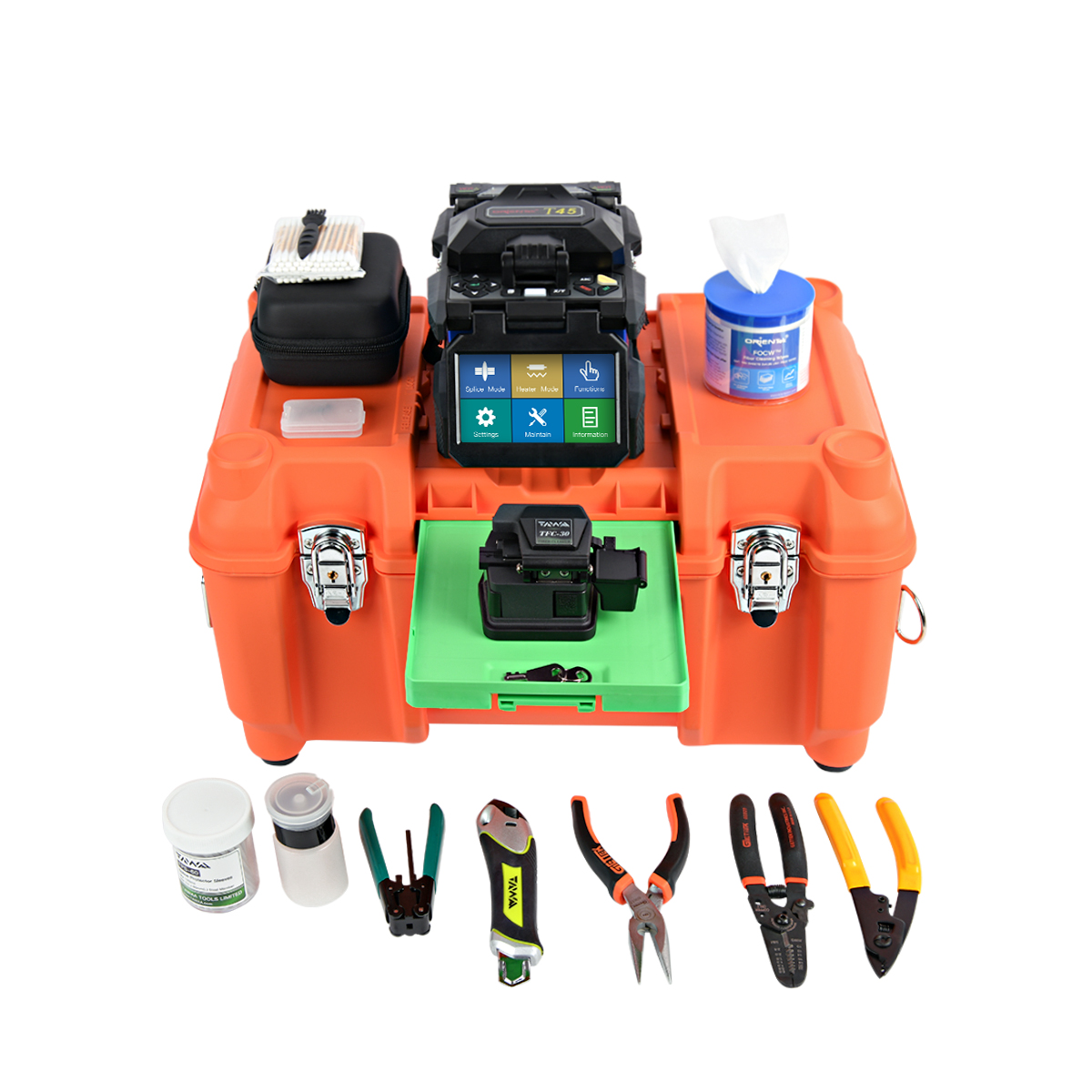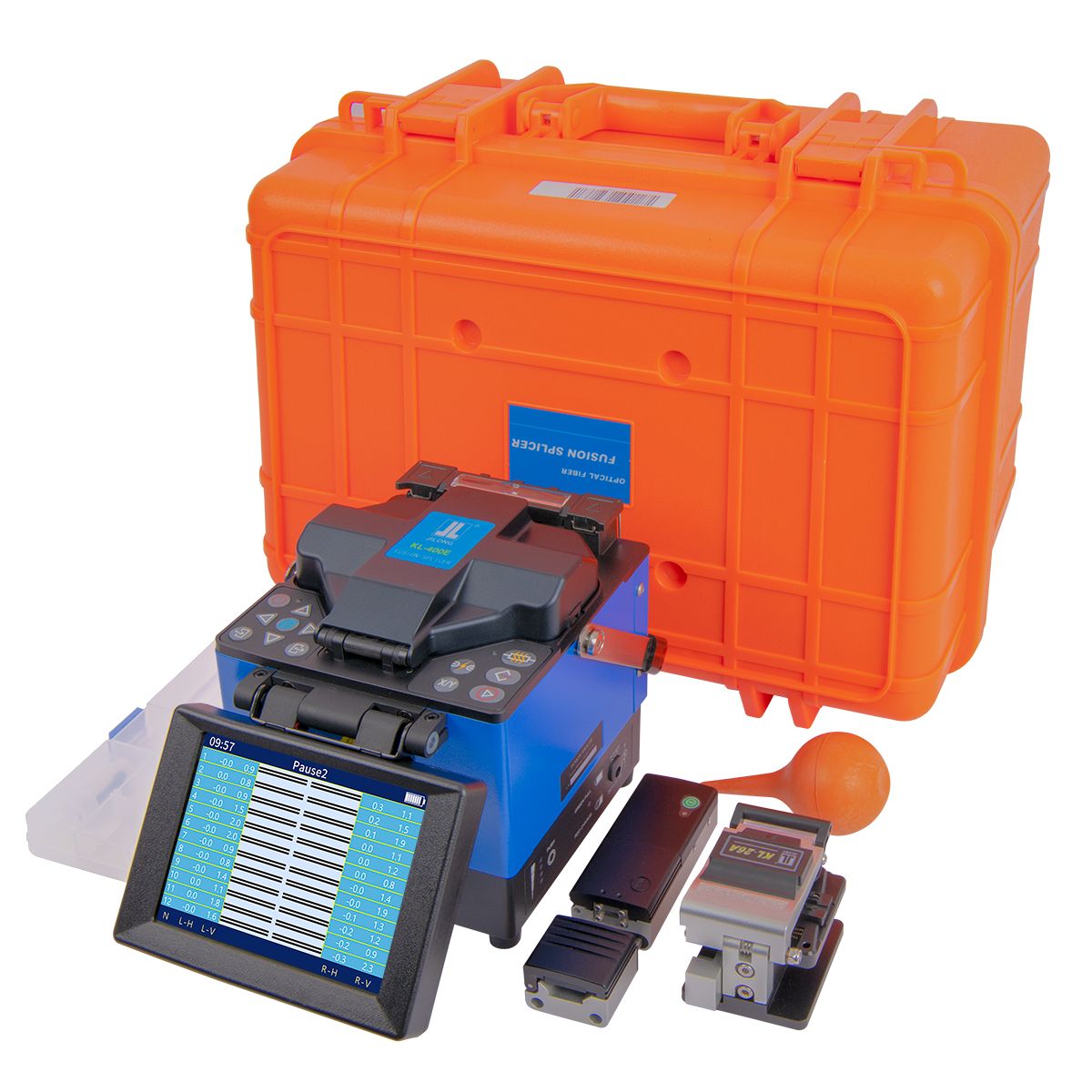With the advent of the 5G era, you are no stranger to the optical fiber communication industry. You may have heard of the term fusion splicer before, but if you have not heard of it-the optical fiber fusion splicer is used to combine two separate glass optical fibers" Splicing" or fusing together-whether the fiber type is single-mode fiber or multi-mode fiber. The goal is to seamlessly connect two bare fibers. They are connected to each other by an electric arc. You may need to splice for a variety of reasons-the fiber may be broken or damaged, or you may be using a pigtail or splicing (SOC) on the splice to perform fiber termination, or you may need to extend the length of the fiber to the end of the long-distance network . Fusion splicing ensures that the light passes from one end of the fiber to the other without interruption, thereby ensuring minimal back reflection from the splice. Welding can be used instead of mechanical splicing. In fact, due to its advantages, it is usually the first choice, which we will discuss in the following paragraphs.
Compared with mechanical splicing, welding ensures the best performance, lowest loss and lowest reflectivity. The price of the fusion splicer depends on the type you choose. Core alignment and ribbon or bulk fusion splicers are more expensive than cladding alignment fusion splicers. The features of most standard fusion splicers include a large color screen, a built-in fusion socket oven, and many come with high-precision cutters when purchased as a kit. As technology advances, we see Bluetooth options, fully automated processes, and Wi-Fi capabilities being developed.
Typical applications using fusion splicers include fiber-to-the-home applications, applications that use connector fusion splicing, maintenance of data center locations, and research and development facilities. When you have a fusion splicer, you can repair it immediately, whether it is a damaged fiber or a damaged connector, you can use the fusion splicer to repair and let your system resume operation immediately. There are many fusion splicer manufacturers on the market, each of which has its own advantages, functions and advantages, but you can buy two main types of fusion splicers.
Core Alignment Splicer

In the core alignment unit, the cores of the fibers are aligned before splicing, not the cladding of the fiber you are trying to splice. These devices work using a system consisting of a magnifying glass, a camera, and a motorized movable fiber holder or clamp to view the fiber. These components will move the fiber in any necessary way to achieve the correct alignment of the fiber core. After aligning according to the parameters set in the software, stitching is performed. The operator of the fusion splicer does not have to worry about manually moving the fiber to get the correct alignment.
After the alignment is achieved, these stitching can be completed in just a few seconds. For the core alignment unit, you can set specific joint recipes or parameters to achieve specific results for your application. These features help make the core alignment fusion splicer more expensive than the cladding alignment unit, but they are also what makes the core alignment unit so easy to use.
Ribbon Splicer

A ribbon fusion splicer or quality fusion splicer is exactly what it sounds like; it is a fusion splicer used to splice ribbon optical fibers together. In this case, instead of splicing a single fiber during the splicing cycle, the machine splices up to 12 fibers together at the same time. These units are generally more expensive than their single fiber counterparts. They use a cladding alignment system to align the fibers before performing fusion splicing. Almost all ribbon fusion splicers can hold up to 12 optical fiber ribbons in their brackets, but many optical fiber ribbons can hold up to 2 optical fibers. Special ribbon fiber holders are used to splice fiber ribbons of various fiber counts. Ribbon fusion splicers can use suitable brackets to splice individual optical fibers together, but if you do not use ribbon fibers often, then it is not cost-effective to purchase ribbon fusion splicers.
Cladding Alignment Splicers
The cladding alignment unit is different from the core alignment fusion splicer because they only use a fixed V-groove to align the fibers according to the cladding of the fibers being spliced. These types of splicers are more basic units, and they lack some of the bells and whistles commonly found in core alignment units. In the cladding alignment fusion splicer, the alignment of the fusion spliced fibers is not as perfect as the core alignment, because this type of fusion splicer only matches the outer cladding of the optical fiber, and they only move one axis. After the splicing is completed, if the core concentrically of the optical fiber is not at the dead point, the core of the optical fiber may shift slightly. When cost is an issue, these types of fusion splicers are preferred because they are more affordable and can accept higher attrition rates. These units are usually handheld and are usually much smaller than the core alignment unit, so if space is a problem, such as in a bucket truck or narrow telecommunications cabinet or hand hole, it may be beneficial to use a smaller cladding The alignment splicer.
After performing each joint on the cladding or core alignment device, the joint will give an estimated loss reading of the joint, and a “proof test” will also be performed to ensure that the tensile strength of the joint is stable and will not be affected by any slight Broken due to error handling. Both units will splice your fiber and complete the work. So, all in all, whether you are looking for a high-quality fusion splicer or a more affordable product, there are many options on the market. It all depends on the options you are looking for and the features you need to get the job done. There are super simple units and then fancy high-tech units, but every fiber optic technician has his own preferences and needs.

